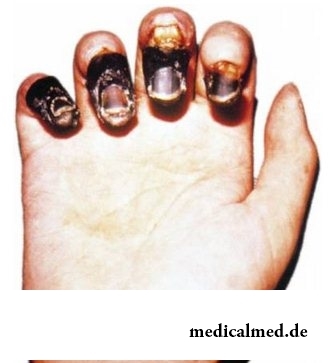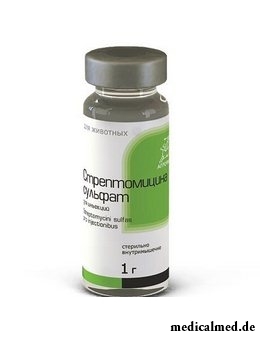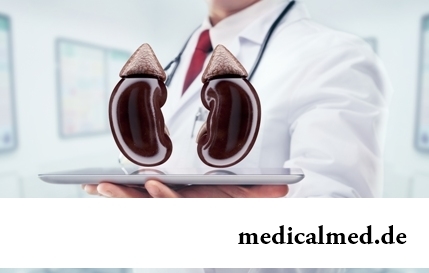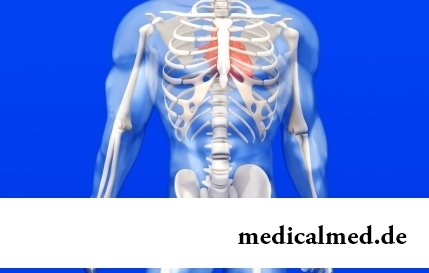





Plague
What is plague and why it is called black death?

Plague is a serious infectious disease which leads to large-scale epidemics and quite often comes to an end with the death of the sick person. Iersinia pestis – a bacterium which was found at the end of the 19th century by the French scientist A. Yersen and the Japanese researcher S. Kitazato is caused. At the moment causative agents of plague are studied rather well. In the developed countries of a disease outbreak of plague happen extremely seldom, but so was not always. Described the first in sources epidemic of plague happened in the 6th century in the territory of the Roman Empire. Then the disease claimed the lives about 100 million people. 8 centuries later history of plague repeated in Western Europe and the Mediterranean where more than 60 million people died. The third large-scale epidemic began in Hong Kong at the end of the 19th century and quickly extended more than in 100 seaports of the Asian region. In only one India plague led 12 million people to death. For the hardest effects and characteristic symptoms plague is often called "black death". It really does not spare either adults, or children and in the absence of treatment "kills" more than 70% of the infected people.
Now plague meets seldom. Nevertheless, on the globe the natural centers where contagiums regularly come to light at the rodents living there still remain. The last, by the way, are the main carriers of a disease. Deadly bacteria of plague get into a human body through fleas who look for new owners after mass death of the infected rats and mice. Besides, the airborne way of transmission of infection which, actually, and defines bystry spread of plague and development of epidemics is known.
In our country Stavropol Territory, Transbaikalia, Altai, Caspian Depression and the East Ural region are among regions, endemic on plague.
Etiology and pathogeny
Causative agents of plague are steady against low temperatures. They well remain in a phlegm and are easily transferred from the person to the person in the airborne way. At a sting of a flea on an affected area of skin at first there is a small papule filled with hemorrhagic contents (skin plague). After that process quickly extends on absorbent vessels. In them ideal conditions for reproduction of bacteria are created that leads to the explosive growth of causative agents of plague, their merge and formation of conglomerates (bubonic plague). Penetration of bacteria into respiratory system with further development of a pulmonary form is possible. The last is extremely dangerous as it is characterized very much by a rapid current and covers huge territories due to intensive distribution between members of population. If treatment of plague begins too late, the disease passes into a septic form which strikes all bodies and systems of an organism, and in most cases comes to an end with the death of the person.
Plague – disease symptoms
Symptoms of a disease of plague appear in 2 - 5 days. The disease begins sharply with a fever, sharp fervescence to critical marks, falling of arterial pressure. Further neurologic symptoms join these signs: nonsense, lack of coordination, confusion of consciousness. Other characteristic manifestations of "black death" depend on a specific form of an infection.
- bubonic plague – lymph nodes, a liver, a spleen increase. Lymph nodes become firm and extremely painful, are filled with pus which breaks outside over time. The wrong diagnosis or inadequate treatment of plague lead to the death of the patient for 3-5 day after infection;
- pulmonary plague – affects lungs, patients complain of cough, a plentiful otkhozhdeniye of a phlegm in which there are clots. If not to begin treatment during the first hours after infection, then all further actions will be inefficient and the patient will die within 48 hours;
- septic plague – symptoms demonstrate distribution of activators literally on all bodies and systems. The person perishes at most within a day.
Also the so-called small form of a disease is known to doctors. It is shown by insignificant rise in body temperature, a hyperadenosis and a headache, but usually these signs disappear in itself in several days.
Treatment of plague

Diagnosis of plague is carried out on the basis of laboratory crops, immunological methods and polymerase chain reaction. If bubonic plague or any other form of this infection is found in the patient, then he is immediately hospitalized. At treatment of plague at such patients the personnel of medical institution are obliged to observe strict measures of precaution. Doctors have to put on 3-layer gauze bandages, goggles for the prevention of hit of a phlegm on the person, boot covers and the hat which is completely closing hair. If there is an opportunity, then special antiplague suits are used. The compartment in which there is a patient is isolated from other premises of institution.
If bubonic plague is found in the person, to him enter streptomycin intramusculary 3-4 times a day and tetracycline antibiotics intravenously. At intoxication saline solutions and Haemodesum are shown to patients. The lowering of arterial pressure is considered as a reason for emergency treatment and resuscitation actions in case of increase of intensity of process. Pulmonary and septic forms of plague demand increase in doses of antibiotics, immediately stoppings of a syndrome of intravascular coagulation, introduction of a fresh blood plasma.
Thanks to development of modern medicine, large-scale epidemics of plague became a big rarity, and now mortality of patients does not exceed 5-10%. Fairly it for those cases when treatment of plague begins in time and meets the established rules and standards. For this reason at any suspicions on existence in an organism of causative agents of plague doctors are obliged to carry out urgent hospitalization of the patient and to warn the bodies which are engaged in control over spread of infectious diseases.
According to opinion of many scientists, vitamin complexes are almost useless for the person.

Practically each person is familiar with the annoying, pulling, unscrewing pains caused by overcooling of muscles of a back. In некото...
Section: Articles about health
All got used long ago that, having addressed the plastic surgeon, it is possible to modify natural parameters of a figure or to minimize the damages put to appearance with ruthless time. Many people (preferential women) worldwide е...
Section: Articles about health
From sexual contacts each person can test insufficiently strongly expressed sexual desire or lack of satisfaction from time to time. However when it happens regularly, it is an occasion to think about health. Most of people does not hurry to ask similar questions physicians: one consider that they will be able to cope with malfunctions independently, others hesitate to report to strangers about so delicate problems and hope that troubles will stop by itself....
Section: Articles about health
Frosty air, fresh wind and easy snowball at most of Russians are associated with cheerfulness, health and cheerful entertainments, on to...
Section: Articles about health
Kidneys perform the most important function of clarification of blood from those products of metabolic processes which cannot be used by an organism for obtaining energy and construction of new cells. With the urine produced by kidneys from a body of the person bulk is removed...
Section: Articles about health
It is pleasant to state a possibility of improvement of quality of life of people with problems of functioning of secretory system. Efforts of talented inventors created products which will be able to provide normal life activity of clients with moderate degree of a disease, it is essential to facilitate the help to patients with strongly expressed disturbances....
Section: Articles about health
Beauty shop – the place which is associated only with positive emotions: joy, pleasure, relaxation. One...
Section: Articles about health
The majority of gynecologic diseases prove three main signs, each of which speaks about need of a visit to the gynecologist. Certainly, it is possible to establish the exact diagnosis only after inspection, but on the basis of some signs it is possible пр...
Section: Articles about health
There comes the season of issues. Many Russians already dream of outdoor recreation, trips, beautiful seaside beaches. At this time there is no wish to think of problems with health and other unpleasant things, however there are subjects which require attention. In the summer repeatedly the risk increases to ache with some very dangerous illnesses, we also will talk about them today....
Section: Articles about health
The trophic ulcer is not an independent disease. This heavy complication arising owing to a thermal injury (a burn...
Section: Articles about health
Not everyone can brag of the shining Hollywood smile. Even the person who is regularly visiting the stomatologist and watching of oral cavities over health periodically has problems: enamel of teeth darkens under the influence of some products, on it I accumulate...
Section: Articles about health
Statistically cystitis 25-30% of women up to 40 years have. With age this indicator raises, besides many do not get to statistics because do not see a doctor. The most sad that after the regular visits to doctors, long reception of antibiotics and life in the mode "it is necessary to take care" cystitis all the same is returned to a half of women. Symptoms of cystitis are unambiguous and it is impossible to confuse them with anything: bladder pain, burning at an urination, frequent desires to go to a toilet, a vynuzhd...
Section: Articles about health
Statistically, pathologies of a thyroid gland in the world more than 500 million people have. Failures in work of this body conduct to is heavy...
Section: Articles about health
Life expectancy in various regions of Earth is not identical. Social stability, economic wellbeing, availability and level of medical care, household comfort, literacy of the population in the field of observance sanitary гигиен exert impact on it...
Section: Articles about health
Childbirth is the most important event in life of each woman. We are women we give birth to the new little man on this light. Now the tendency to that was outlined, as men want to participate in labor too. But there is a question and whether it is worth allowing the husbands on childbirth?...
Section: Articles about health
Memory is an ability of the central nervous system to fix, keep and as necessary to reproduce information on knowledge...
Section: Articles about health
The problem of diagnosis was and remains to one of the most important in medicine. From that, the reason of an indisposition of the patient will be how precisely defined, eventually success of treatment depends. In spite of the fact that the majority of the diagnostic methods applied in about...
Section: Articles about health
The sudden heat on all body which is followed by perspiration and a cardiopalmus – the phenomenon familiar to many people. Most often such states called by "inflows" result from nervous or physical overworks and disappear right after rest. However in certain cases similar reaction of an organism can speak about diseases which need treatment. What? About it below....
Section: Articles about health
Very often as a source of the infection which caused a disease serves our house - the place which a priori has to be safe. However...
Section: Articles about health
During foot walks blood moves on vessels more actively and one and all bodies are supplied with a large amount of oxygen. It affects the state of health of the person very positively....
Section: Slideshow
The dietology, as well as other sciences, does not stand still. Food stuffs are exposed to comprehensive study, and scientists obtain new information on their properties and influence on a human body. Unfortunately, this reasonable and natural process gives unpleasant side effect from time to time: some types of food periodically declare "harmful" or even "deadly" without the bases, sufficient on that....
Section: Articles about health
For most of the working people the problem of having a snack is particularly acute enough. Sooner or later there is a question: what is possible quickly for a sja...
Section: Articles about health
For many women the word "fat" sounds as a sentence. In aspiration to an ideal figure they try to exclude, first of all, from the menu all dishes containing fats without having at the same time a clear idea of a role of these substances in exchange processes, and about an afterbirth...
Section: Articles about health
Hemorrhoids – extremely widespread disease. Periodically arising inflammations and bleeding of hemorrhoidal nodes cause serious discomfort to nearly fifteen percent of adults. Meanwhile, having a clear idea of the reasons of an exacerbation of an illness and following rules of precaution, it is possible to reduce substantially sharpness of unpleasant feelings and to reduce progressing of a disease....
Section: Articles about health
Sooner or later hair turn gray at all. Many people try to hide these changes, returning natural color of the hair with the help about...
Section: Articles about health
Urogenital candidiasis (milkwoman) – a fungal infection which annoys unpleasant feelings in the field of generative organs, being followed by white curdled allocations, an itch, discomfort during an urination, pain. She is called by Candida fungus – a mustache...
Section: Articles about health
The advantage of swimming for the person is so high that this sport is not only the most popular, but also is widely applied in medicine and rehabilitation processes. If you look for for yourself the occupation allowing pleasantly and to spend time, then swimming with advantage – the fact that it is necessary for you. And give learns several facts about swimming....
Section: Slideshow
